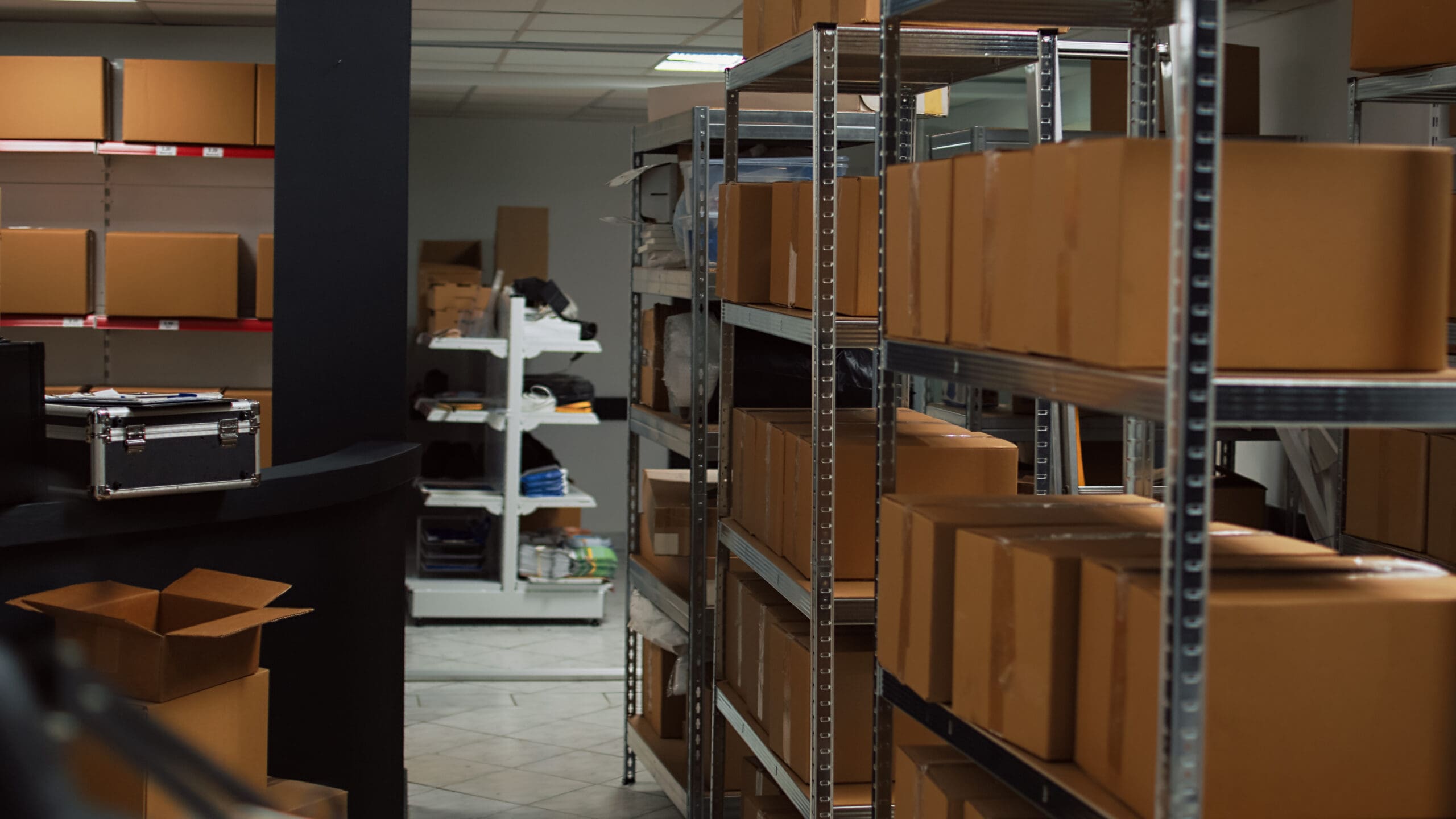One of the most difficult things to manage when running a small business is inventory. Whether you’re a startup or an established company, keeping tabs on your inventory requires a substantial amount of time and effort. Without putting in the work, inventory issues can contribute to losses, missed sales opportunities, and even bankruptcy. But with research and a bit of financial literacy, you can ensure that your supply chain is well-oiled and properly handled. After all, efficient inventory management does not magically happen overnight.
Is inventory financing right for your business?
Inventory financing is a type of asset-based lending that enables businesses to leverage their inventory to be able to obtain a business loan. Usually, businesses that experience poor cash flow apply for inventory financing loans to cover their inventory needs. Keep in mind that poor cash flow can stem from a plethora of different issues such as unsold stock, late payments, and – at times – unmanageable growth.
If you ever find yourself unable to restock your inventory, then it might be time to consider applying for an inventory financing loan. But how does it work exactly?
How does inventory financing work?
When it comes to inventory financing, businesses can either apply for a short-term loan or a line of credit. Just like any other business loan, your bank or lender will determine the terms of your loan depending on your business’ overall creditworthiness and the value of your goods. However, note that you will not get the full appraised value of your inventory in the form of a loan. Your lender will only finance up to 50% to 80% of your inventory’s appraised value.
For instance, if the appraised value of your asset is worth $100,000, chances are you would be eligible to borrow a loan amount of at least $50,000.
Types of inventory financing
There are two main types of inventory financing: an inventory loan and an inventory line of credit.
Inventory loans
An inventory loan comes in the form of an upfront lump sum payout that businesses can use to purchase additional inventory. This type of inventory lending solution has a fixed interest rate that the borrower must repay over a set repayment period. Inventory loans typically have a repayment term that ranges from a few months to a couple of years. Since inventory loans are considered short-term business loans, borrowers should expect larger monthly payments.
Inventory lines of credit
Another inventory financing loan that borrowers can look into is an inventory line of credit. Unlike an inventory term loan, an inventory line of credit lets businesses borrow up to their line’s limit and borrow more as they repay. This type of funding solution is perfect for businesses that experience seasonal demand as interest is only charged on the total amount borrowed. What’s more, borrowers can access the funds again as needed without having to go through the process of applying for another loan.
Inventory Financing Benefits and Drawbacks
As with any business decision, it’s important to do your due diligence. If you are seriously considering applying for an inventory financing loan, then it’s important to consider its many benefits and drawbacks.
Benefits of inventory financing
- Leverage your inventory instead of other assets. An inventory financing loan may be easier to qualify for as opposed to other types of business inventory loans since lenders ask borrowers to pledge their inventory as collateral.
- Get ahead of peak shopping seasons. While an inventory loan can help businesses stock up during peak shopping seasons, it can also help businesses that are trying to expand their product lines.
- Easily accessible funds for inventory purchases. If you were able to qualify for an inventory line of credit, then you would have accessible funds dedicated to your inventory needs. Just make sure to keep a close eye on your spending and don’t go over the credit limit!
- Works well with businesses of any size. No matter how big or small, businesses will encounter cash flow issues one way or another. Inventory financing is a great way to cover your inventory purchases without worrying about your other outgoing cash flow obligations.
Drawbacks of inventory financing
- May prove costly. Aside from the time-consuming and expensive due diligence process, businesses need to take into account the fees that come with an inventory financing loan. Some of these fees include origination fees, late fees, and prepayment penalties.
- Can only be used for inventory purposes. One big limitation of an inventory financing loan is that it can only be used to purchase inventory.
- May have high loan minimums. Because of its high setup costs, some lenders may require businesses to borrow a certain amount before their application could proceed. While loan minimums vary from one lender to another, some lenders may require a minimum of up to $500,000.
- Higher interest rates, shorter payment terms. Compared to other types of inventory lending, inventory financing loans are usually repaid over a shorter period which means businesses may have to cough up sizable monthly payments.
Are there alternatives to applying for an inventory loan or an inventory line of credit?
If you’re uncertain about applying for an inventory loan or an inventory line of credit from traditional financial institutions, the good news is that there are other alternative financing options you can consider. Check out some of them below!
- Credit cards – The great thing about having a business credit card is that you can use them to cover day-to-day business expenses while also earning points and rewards. Like lines of credit, business credit cards enable businesses to access a revolving line with a set limit. Most financial institutions also offer interest-free financing which is perfect for businesses that want to pay for big purchases over time without the hassle of paying added interest.
- Online loans – Due to its fast application process, online loans are becoming a popular choice for businesses that need a quick injection of cash. Online lenders usually allow borrowers to go through a pre-qualification process that would determine the different rates and terms they qualify for depending on their overall creditworthiness.
- Crowdfunding – Crowdfunding is a method of raising capital through an online network of individuals willing to provide the necessary funds for a business to expand, finance a new venture, or restock its inventory. Instead of taking out a traditional bank loan, businesses can use crowdfunding by asking a large group of people for small amounts of cash in order to meet a certain monetary goal. However, for a crowdfunding effort to succeed, businesses must carefully plan their strategy to capture the attention of their potential backers. One platform that specializes in an element of inventory crowdfunding is Kickfurther.
How can Kickfurther help your business?
Kickfurther funds up to 100% of your inventory costs on flexible payment terms that you customize and control. With Kickfurther, you can fund your entire order(s) each time you need more inventory and put your existing capital to work growing your business without adding debt or giving up equity.
Why Kickfurther?
No immediate repayments: You don’t pay back until your new inventory order begins selling. You set your repayment schedule based on what works best for your cash flow.
Non-dilutive: Kickfurther doesn’t take equity in exchange for funding.
Not a debt: Kickfurther is not a loan, so it does not put debt on your books. Debt financing options can sometimes further constrain your working capital and access to capital, or even lower your business’s valuation if you are looking at venture capital or a sale.
Quick access: You need capital when your supplier payments are due. Kickfurther can fund your entire order(s) each time you need more inventory.
Kickfurther puts you in control of your business while delivering the costliest asset for most CPG brands. And by funding your largest expense (inventory), you can free up existing capital to grow your business wherever you need it – product development, advertising, adding headcount, etc.
Actions to Take After Your Marketing Budget is Freed Up

By utilizing Kickfurther, your brand can boost its marketing investment substantially. We highly recommend employing influencer marketing as one of the strategies for promoting your product, with a particular focus on athlete influencers who frequently outshine conventional influencers. OpenSponsorship stands as the leading platform in this field, facilitating brand connections with a vast network of over 17,000 athletes. This platform empowers you to effortlessly search for athletes, assess their audience demographics, efficiently manage influencer marketing campaigns, and guarantee secure payment transactions.
Interested in inventory financing with Kickfurther? Create a business account today.









